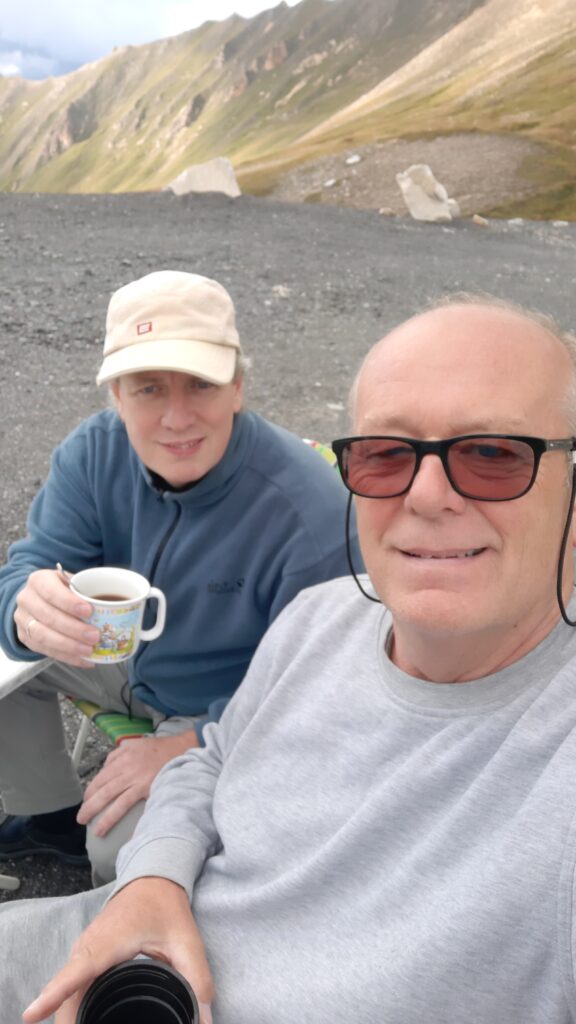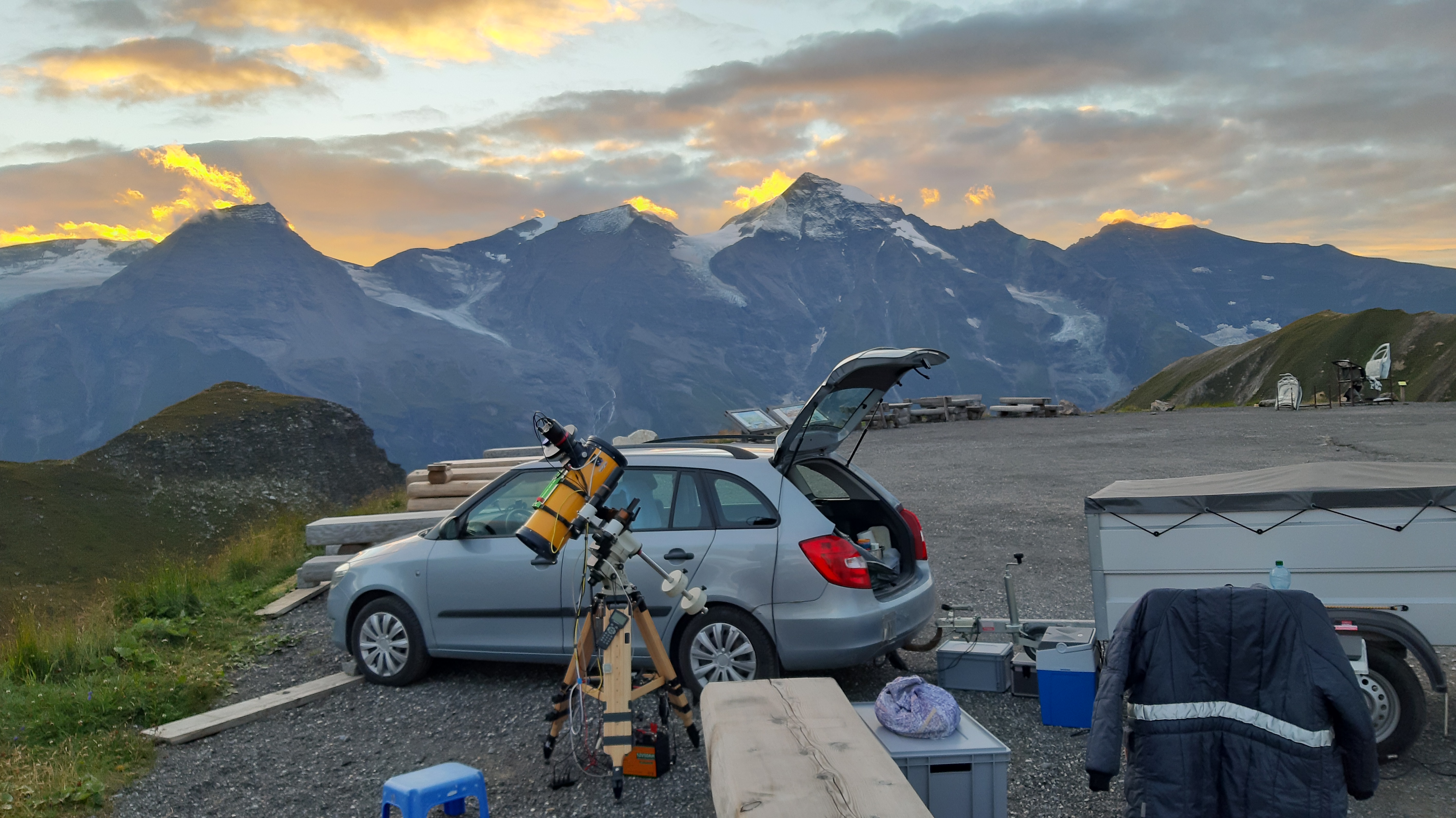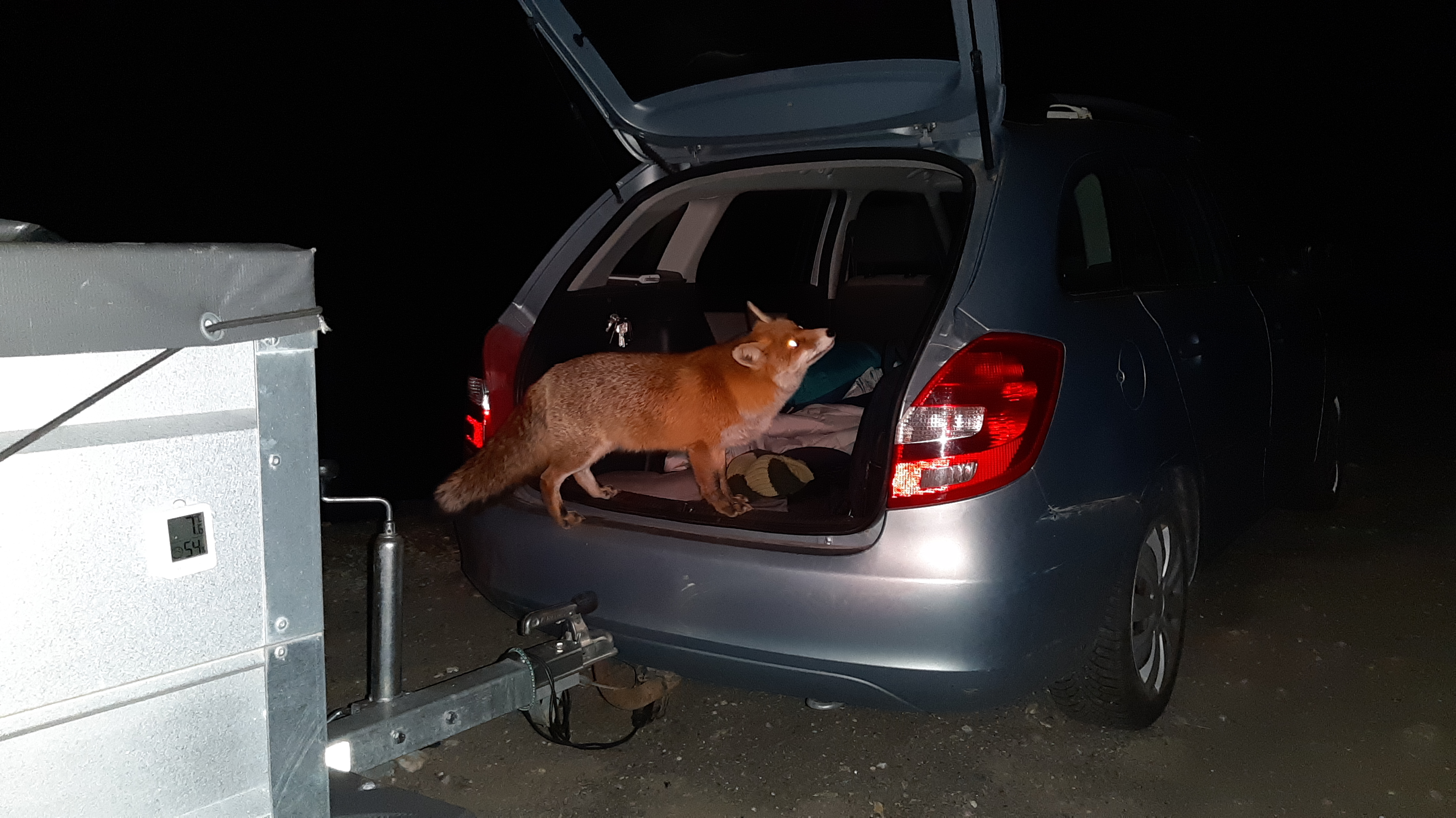Services
Snapshots
My astro colleague Marcus also came across the Fuscher Törl. Astronomy is much more fun with two people and you can exchange experiences!


The Fuscher Törl
In August 2022 I was on the Fuscher Törl for the first time. Here in the beautiful Großglockner area in the Austrian Alps at an altitude of approx. 2400m, you can do wonderful astronomy.
The fox from Fuscher Törl
The nice fox keeps my astro workspace clean.

The happy sheep from Fuscher Törl
The sheep are apparently very happy here and run after the "lead sheep" with the bell around their necks.
F. A. Q.
Ask ? I want to start astrophotography. What should I pay particular attention to when making purchases?
When it comes to astrophotography, very stable and accurate tracking is important!
Therefore, you should only use astro mounts that are very suitable for astrophotography.
Only then can good optics deliver the promised performance!
Ask ? If I buy good astro equipment with a mount, can I expect great astro photos straight away?
A certain amount of learning time under the night sky and at home is absolutely necessary. The weakest link in the “chain” can ruin everything. Before doing so, you should look over the shoulder of your experienced astro colleagues and take note of their advice. Almost every inexpensive mount will have an “autoguider”, e.g. B. need the Lacerta MGEN to achieve a round star image. If the “seeing” is bad, even the best autoguider won’t help. Astroweather knowledge is also in demand.
Ask ? Should I start straight away with large optics and large focal lengths?
The larger the optics and the focal length, the heavier the load the astro mount has to carry. You quickly reach the mounting limits of the mount. You should only use a maximum of 75% of the load capacity.
The larger the focal length of the optics is designed, e.g. B. over 1000mm, the more difficult it becomes to guide around stars. Especially when there is wind, high humidity and poor seeing, it quickly becomes impossible to generate high-quality images.
What is Seeing?
Seeing is the quality in which the starlight arrives at our observation site. Depending on the height at which it is photographed, the starlight has to penetrate the Earth's atmosphere for different lengths of time. It is negatively influenced by various factors. The atmosphere consists of different layers that have different densities depending on temperature, humidity and wind direction. These different density values of the atmosphere cause different refractive indices of light. This is why stars, which are point sources of light in space, sparkle very strongly when the seeing is poor. This negatively affects the seeing and guiding and as a result the star image becomes much too large and blurry. With high focal lengths and high-resolution optics, there is no choice but to move the observation location to higher altitudes or wait for better weather. Altitudes that are above the strongly fluctuating weather patterns are particularly suitable. That's why the large scientific telescopes can all be found at altitudes of over 2000m!
I don't even want to talk about the negative influences of light pollution/scattered light that can then occur!
Assess seeing?
On the “Meteoblue” site https://www.meteoblue.com/de/wetter/outdoorsports/seeing/ebenwald-htte_sterreich_2780541 There are good seeing forecasts for each selected location. The values for “index, JetStream, bad layer K value” should have a “green” background if possible. You can usually expect good seeing, especially before or after the passage of a bad weather front. Some weather knowledge is required.
Test
Test…(Baustelle)